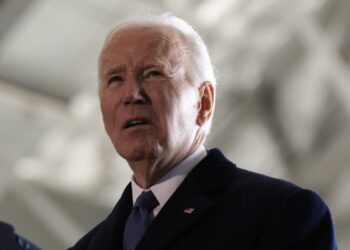The Federal Reserve raised the target federal funds rate by 0.75% on Wednesday, but indicated that officials will avoid an overly zealous contractionary policy even as economists warn of a lagged effect that could reach into next year.
The fourth consecutive 0.75% increase occurs as inflation remains elevated at four-decade highs. Target interest rates are now set between 3.75% and 4%.
“In the face of stubbornly high inflation, the Federal Reserve raised interest rates aggressively once again,” Bankrate Chief Financial Analyst Greg McBride remarked in a statement provided to The Daily Wire. “Unfortunately, we’re likely to feel the pain of a slower economy before we see the gain of lower inflation.”
The stock market reacted positively in the immediate aftermath of the rate hike announcement since a statement from the Federal Reserve Board of Governors affirmed that officials “will take into account the cumulative tightening of monetary policy, the lags with which monetary policy affects economic activity and inflation, and economic and financial developments.” The new language had not been included in previous announcements.
McBride affirmed that the central bank does not intend to pause or reverse their contractionary monetary policy. “Upcoming meetings will bring smaller rate hikes, but a higher eventual stopping point and for a longer period once we get there,” he continued. “They want interest rates to be an economic headwind, but they want to be guarded about overdoing it. If only inflation will cooperate.”
Policymakers at the Federal Reserve had pegged a near-zero target interest rate immediately following the onset of the lockdown-induced recession, also moving to acquire government bonds in order to increase the money supply and stimulate economic activity. Many leading analysts have more recently criticized the central bank amid the return to a contractionary regime, contending that officials who were lackluster in their response to rising price levels are now causing undue harm through their zeal to manage inflation.
Target interest rate decisions carry impacts across every corner of the economy. The 30-year fixed mortgage rate, for instance, rose above 7% after remaining below 3% for much of the past two years, according to data from government-backed mortgage company Freddie Mac.
“The lagged effect of all these interest rate hikes means a rapidly slowing economy in 2023,” McBride said. “The abrupt slowdown in the housing market is a harbinger of broader economic slowing to come.”
Federal Reserve officials have indeed warned on multiple occasions that economic growth will be “essentially flat” in the second half of the year following two consecutive quarters of negative growth, implying that the United States had entered a technical recession. A recent report from the International Monetary Fund projected that the global economy will grow at a meager 2.7% in 2023, following 3.2% growth in 2022 and 6% growth in 2021, marking the weakest expansion in two decades.
Federal Reserve Vice Chair Lael Brainard cautioned last month that the “moderation in demand due to monetary policy tightening is only partly realized” so far, with particularly interest-sensitive sectors like housing anticipated to see the greatest detriment first. “In other sectors, lags in transmission mean that policy actions to date will have their full effect on activity in coming quarters, and the effect on price setting may take longer,” she said. “The moderation in demand should be reinforced by the concurrent rapid global tightening of monetary policy.”











